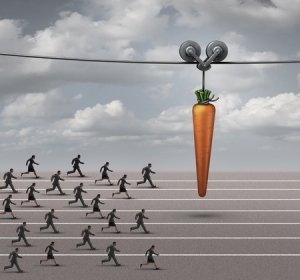Is it Time to Stop Paying Technicians for Leads?

I recently read Daniel Pink’s book, Drive – The Surprising Truth About What Motivates Us, and found that the conclusions from the book are directly relevant for those managers who are looking for ways to encourage their technicians to proactively promote their products and services. These conclusions made me question, “Is it time to stop paying technicians for leads?”
Extrinsic vs. Intrinsic Rewards
In Drive, Pink presents compelling evidence that extrinsic rewards for completing certain tasks – for example, external rewards such as commissions, lump sum payments, etc. – do not always work and can even cause harm. According to Pink, this is particularly true where the task is not routine and when it entails thinking and creativity.
The evidence suggests that creative tasks, such as evaluating and presenting the best solution for addressing a particular need, provide their own rewards in the doing. These are called intrinsic rewards because the reward comes from performing the task rather than from an external source. In situations like these, it is the reward of actually completing the task itself that largely motivates the employee to continue.
This last point is consistent with what I have experienced in my work with technicians. There are many field service professionals who naturally bring ideas to the customer without any prompting or incentives. They do this because they see it as part of the service they provide. They get satisfaction and take pride from the fact that they are truly helping the customer. They don’t need extrinsic rewards to get them to act; their reward comes from the act itself.
The Problem with Extrinsic Rewards
The problem with extrinsic rewards is that they can diminish intrinsic motivation for doing a task and turn that task from an interesting part of the job, into a menial chore. But that is not all that Pink found to be problematic about extrinsic rewards. Diminishing intrinsic motivation is just the first of the “Seven Deadly Flaws”[1] as described by the author. The other six flaws of extrinsic rewards are:
- They can diminish performance.
- They can crush creativity.
- They can crowd out good behaviour.
- They can encourage cheating, shortcuts and unethical behaviour.
- They can become addictive.
- They can foster short-term thinking.
What Can Be Done?
So, what can we do if we want to encourage this proactive behaviour on the part of our technicians? Here are some ideas:
- Ensure that the baseline compensation is fair and adequate.
- Constantly reinforce the fact that the act of identifying opportunities to help and speaking to the customer about them is an integral part of the service provided. As part of this, showcase examples of where technicians have acted in this way and how it specifically has helped the customer.
- Openly praise and provide feedback to reinforce desired behaviours.
- Offer rewards that are not contingent on the individual act of promoting services, but which recognize group-wide achievement. Pink calls these types of rewards “now that” rewards – as in, “now that you have achieved this, here is a reward to recognize that achievement.” These are rewards that are not typically communicated in advance. Pink cautions that this approach can lose its effectiveness if the “now that” rewards become expected (or contingent) rewards.
In the end, I think it all comes down to how we think about the task of making recommendations to customers. If we see this task as part of the service, then we should treat and support it like we do all other services. If we don’t provide extrinsic rewards for completing routine repairs for example, does it really make sense to do so for making recommendations? The evidence suggests that offering extrinsic rewards may have the opposite effect to what we intend.
As always, I welcome your comments and questions. You can connect with me via telephone or email or leave a comment right here on the site. And as always, please feel free to leave a link back to your own blog if you have one via the commentluv feature here on the site. If you are reading this blog post via email, you will need to locate this post on my website by clicking here. Scroll down to the bottom of the page where you will find the comment section.
Jim Baston
“Motivation is the art of getting people to do what
you want them to do because they want to do it.”
– Dwight D. Eisenhower
[1] Daniel H. Pink, Drive – The Surprising Truth About What Motivates Us (New York: Riverhead Books, 2009), p. 59.




Leave a Reply
Want to join the discussion?Feel free to contribute!